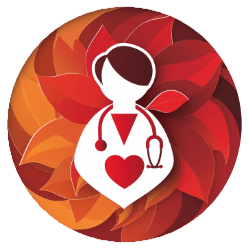Imagine you're a nurse in a bustling hospital ward, your shifts stretching long into the night, stress accumulating like the unending paperwork on your desk.
You've heard about yoga's calming effects, but you're skeptical—how can a few stretches and deep breaths make a dent in the mountain of stress healthcare professionals like you face daily?
Yet, there's a growing body of evidence suggesting that yoga isn't just a physical practice but a comprehensive approach to mental well-being, offering tools for relaxation that are both quick to learn and effective in practice.
The '10 Best Yoga Routines for Stress Relief in Healthcare' not only demystifies yoga for those in the medical field but provides a curated list of poses and techniques specifically designed to combat stress and enhance resilience.
As you navigate the challenges of healthcare, understanding how to integrate these routines into your daily life could be the key to maintaining your own health and well-being.
Let's explore how these routines can offer you a sanctuary of calm in the midst of chaos, inviting a sense of balance back into your life.
Key Takeaways
- Yoga is a comprehensive approach to mental well-being and stress relief.
- Incorporating short yoga breaks throughout the day can prevent stress accumulation.
- Yoga poses like Stick Pose and Corpse Pose promote deep relaxation and calmness.
- Regular yoga practice improves resilience and helps prevent burnout in healthcare professionals.
Understanding Yoga's Impact
By engaging in yoga, you're not just stretching your body; you're also unwinding your mind, effectively reducing stress and anxiety. This ancient practice offers profound stress-relieving benefits that are especially valuable in healthcare, where the demands on both mind and body are intense.
Through a combination of physical postures, relaxation techniques, and focused breathing, yoga fosters a powerful mind-body connection that promotes health and wellness.
The physical postures, or asanas, stretch and strengthen your body, relieving tension and alleviating pain. This not only improves your physical flexibility but also helps in releasing emotional blockages, allowing stress to dissipate more easily. Moreover, the practice of yoga encourages you to focus on the present moment. This enhanced awareness and concentration help center your mind, steering it away from the clutter of daily concerns and towards a state of calm.
Breathing techniques, a core element of yoga, further deepen the relaxation response. By learning to control your breath, you're equipped with a tool to manage stress proactively.
Together, these aspects of yoga create a holistic approach to managing stress, making it an invaluable resource for anyone dedicated to serving others in healthcare.
Breathwork Basics for Nurses
Nurses, mastering breathwork basics can be your secret weapon to combating the relentless stress of your caregiving roles. The practice involves techniques to regulate and enhance breathing, which isn't just fundamental to yoga but crucial for your well-being.
By learning breathwork basics for nurses, you equip yourself with a powerful tool to manage stress and promote relaxation amid the demands of healthcare environments.
Deep diaphragmatic breathing, alternate nostril breathing, and other pranayama practices are core components of breathwork that can significantly relieve stress. These methods encourage you to take deep breaths, filling your lungs and body with much-needed oxygen, thereby calming your nervous system.
Incorporating these practices into your daily routine can't only reduce stress but also improve mental clarity and enhance your overall well-being.
Stick Pose (Yastikasana) Overview
After mastering breathwork basics, exploring the Stick Pose (Yastikasana) can further enhance your stress relief toolkit, offering a simple yet profound way to relax and rejuvenate amidst the challenges of healthcare work. As someone dedicated to serving others, it's crucial to also take moments for yourself, to release tension and recharge your own energy. Stick Pose, a refreshingly straightforward yoga posture, does just that by helping relax muscles, improving circulation, and easing stress.
The beauty of Yastikasana lies in its simplicity and effectiveness in promoting relaxation and stress relief for both body and mind. It's a gentle reminder that taking care of oneself isn't just beneficial but necessary in the demanding field of healthcare. Here's how Stick Pose can become a valuable part of your stress management routine:
- Promotes deep relaxation: Holding the pose while focusing on deep breathing activates the body's relaxation response.
- Versatility: Can be adapted using props like a yoga block or wall for additional support.
- Accessibility: Suitable for all levels, it offers a practical way to alleviate stress and anxiety, even during a busy day.
Incorporating Stick Pose into your daily routine can significantly contribute to your well-being, enabling you to continue providing compassionate care with renewed energy and focus.
Mastering Corpse Pose (Savasana)
Diving into the tranquility of Corpse Pose (Savasana) offers you a profound way to unwind and rejuvenate, lying on your back with arms and legs relaxed as you let stress and tension melt away. This pose isn't just about stillness; it's a practice in deep relaxation that energizes your body and mind, preparing you to serve others with renewed spirit.
To master Corpse Pose, first lie down, ensuring your spine is straight. Relax your arms alongside your body, palms facing upwards, inviting openness and receptivity. Close your eyes to turn your focus inward, and relax your shoulders away from your ears, releasing any held tension.
Deep, slow breathing is crucial in Savasana. It activates your body's relaxation response, helping to reduce stress and anxiety. As you breathe, imagine the stress of your day dissolving with each exhale, leaving your body light and refreshed.
Practicing Corpse Pose regularly builds resilience to stress, enhancing your well-being. It's a reminder that in the midst of a demanding healthcare environment, taking time to care for yourself allows you to better care for others. Embrace the stillness of Savasana, and let it rejuvenate your commitment to serving with compassion and strength.
Benefits of Reclining Bound Angle
As you explore the Reclining Bound Angle pose, you'll find it's not just about physical flexibility; it also enhances your mental calmness.
This practice stretches more than your inner thighs and hips—it reaches into the realms of your emotional balance, offering a sanctuary of peace in a hectic day.
Embracing this pose can be a pivotal step in your journey towards a more balanced and stress-free life in healthcare.
Enhances Mental Calmness
Through the practice of Reclining Bound Angle, you'll find a serene pathway to enhancing mental calmness, offering a respite from the day's stresses. This pose, coupled with breathing deeply, supports your journey towards a peaceful state of mind, significantly reducing stress and anxiety. By allowing your mind to unwind and your body to release tension, you're not just practicing yoga; you're nurturing your need for inner peace and emotional balance.
- *Breathing deeply* helps in reducing stress and promotes relaxation.
- *Gentle stretching* encourages the release of tension, aiding in stress and anxiety management.
- *Mindfulness* achieved through this practice enhances mental calmness, leading to significant reductions in stress.
Improves Physical Flexibility
Practicing Reclining Bound Angle not only nurtures your mental wellbeing but also significantly boosts your physical flexibility, particularly in the inner thighs and hips, making it an essential pose for anyone seeking to alleviate bodily tension and enhance mobility.
| Emotion | Pose |
|---|---|
| Calm | Child's Pose |
| Relief | Forward Bend |
| Serenity | Legs Up the Wall |
| Balance | Downward Facing Dog |
| Harmony | Reclining Bound Angle |
As you delve into your hatha yoga practice, remember that each pose, from the grounding of Child's Pose to the uplifting serenity of Legs Up the Wall, intertwines to support both your physical and emotional journeys. Your dedication to serving others starts with nurturing your own wellbeing, allowing these poses to guide you to a place of enhanced flexibility and tranquil strength.
Legs Up the Wall Pose Guide
As you explore stress relief methods, the Legs Up the Wall Pose stands out for its simplicity yet profound impact on relaxation and mental calmness.
Let's walk through the benefits, provide you with step-by-step instructions to ensure you're doing it correctly, and highlight common mistakes to avoid for optimal results.
This guide aims to help you incorporate this pose into your routine, enhancing your resilience to stress and promoting a sense of well-being.
Benefits of the Pose
Embracing the Legs Up the Wall Pose can significantly reverse your day's stress, offering a sanctuary of calm and a boost to your circulation. This pose helps not just in moments when you need to let go of the day's challenges but also enriches your overall well-being.
By integrating this into your Yoga for Stress relief routine, you'll find:
- Enhanced relaxation and reduced anxiety, allowing you to serve others from a place of peace.
- Improved circulation and reduced swelling in the legs, so you feel lighter and more agile in your movements.
- Alleviation of lower back tension, easing the physical demands of your day and helping you focus on Poses for Stress that truly benefit your body and mind.
Step-by-Step Instructions
Now that you've learned about the profound benefits of the Legs Up the Wall Pose, let's guide you through how to seamlessly incorporate this restorative practice into your routine for stress relief.
As health-care workers, you're constantly attending to others' needs; it's vital to also attend to your own well-being. Start by finding a quiet space where you won't be disturbed. Sit with your left side against the wall, then gently turn your body and lift your legs up against the wall as you lie back.
Your yoga instructor would remind you that in this yoga sequence, poses help activate relaxation, and these step-by-step instructions are designed to make that process as effective as possible. Allow your body to sink into the ground, breathe deeply, and let the stress melt away.
Common Mistakes to Avoid
While practicing the Legs Up the Wall pose, it's crucial to be aware of common mistakes that can hinder its stress-relieving benefits. In your desire to serve others, don't forget the importance of serving yourself through mindful practice. Here are a few tips to enhance your experience:
- Ensure you're not forcing your legs into a straight position; adjust your distance from the wall to find a comfortable stretch.
- Keep your shoulders relaxed and avoid tensing your neck; this pose is about releasing tension, not creating it.
- Remember to breathe steadily; holding your breath defeats the purpose of this calming exercise.
Before attending yoga classes or trying new poses, it's wise to seek medical advice, especially if you have pre-existing conditions. Always listen to your body and keep your fingers gently engaged, helping you stay present and focused.
Rag Doll Pose for Flexibility
If you're feeling tension building up in your lower back, neck, and shoulders, the Rag Doll Pose offers a gentle, soothing way to unwind and enhance your flexibility. As you fold forward, allow yourself to fully experience the release of stress from your body. This simple yet effective pose encourages you to lengthen your spine, letting each vertebra create space for movement and healing.
As you surrender into the pose, relax your shoulders away from your ears, and let the crown of your head draw closer to the floor. This act of letting go not only releases physical tension but also helps clear the mind, making room for calm and serenity. Breathe deeply in this position, focusing on inhaling peace and exhaling any remaining stress. The slow, rhythmic breathing will further assist in relaxing your entire body and enhancing your flexibility over time.
Incorporating Rag Doll Pose into your daily routine can be a powerful tool for stress relief, especially in the demanding field of healthcare. It's a gentle reminder that taking care of yourself allows you to better serve others.
Seated Forward Bend Technique
Transitioning into the Seated Forward Bend, you'll find it's an incredibly effective way to stretch your entire back, offering deep relaxation and a much-needed stress release. This Yoga posture, also known as the seated forward bend technique, encourages you to sit with your legs extended, hinge at the hips, and fold forward. The goal is to reach for your feet or shins while keeping your spine elongated, enabling a comprehensive stretch from your lower back through your hamstrings and calves.
- Use Props for Comfort: If reaching forward feels challenging, don't hesitate to use a yoga strap or bolster. This adjustment allows for a more comfortable, yet effective stretch.
- Focus on Your Breath: Incorporate deep, mindful breathing to enhance the relaxation and stress-relieving benefits of the pose. Rest your hands on your legs and lengthen with each inhale; deepen your stretch with every exhale.
- Maintain a Straight Spine: Pay attention to keeping your spine straight, emphasizing the stretch in your lower back and ensuring the benefits are maximized.
Revolved Abdomen Pose Explained
Let's delve into the Revolved Abdomen Pose, a transformative posture that aims to alleviate stress by focusing on the spine's gentle twisting motion, offering relief from digestive discomfort and tension.
This pose, known as Viparita, is a sanctuary for those of you dedicated to serving others, providing a moment of tranquility amidst the chaos.
To begin, lie on your back, ensuring your spine is straight and your breathing is deep. Bend your right knee and cross your right foot over to the left side, allowing your left leg to remain extended. As you do this, extend your arms out to form a T, grounding your shoulders to deepen the twist. This motion encourages the release of stress accumulated in your abdomen and spine, promoting relaxation and relief from digestive issues.
In embracing the Revolved Abdomen Pose, you're not just performing a physical action; you're engaging in a reflective practice that nurtures your well-being, enabling you to better serve those in your care.
Incorporating this pose into your daily routine can be a step towards managing stress and fostering a sense of balance and peace.
Integrating Yoga Into Nursing Schedule
As a nurse, you're often caught in a whirlwind of tasks, making it seem impossible to find a moment for yourself. Yet, integrating short yoga breaks into your schedule can be a game changer, offering a moment of tranquility amidst chaos.
These practices not only help in managing your stress but also significantly impact your overall well-being, making every minute count.
Flexible Yoga Scheduling Tips
Integrating yoga into a nursing schedule can significantly alleviate stress, offering a much-needed oasis of calm amidst the chaos of healthcare environments. By adopting flexible yoga scheduling tips, you can seamlessly incorporate yoga stretches into your day, irrespective of how busy it gets. Here's how:
- Plan mini yoga breaks between shifts to prevent stress accumulation, starting from a neutral position with feet hip-width apart for added balance.
- Incorporate one-minute yoga poses multiple times throughout your day to maintain well-being and gently transition into relaxation.
- Integrate low-impact yoga workouts into your routine, embracing restorative poses suitable for all levels to promote relaxation while utilizing breathing techniques to activate the body's relaxation response.
Yoga's Impact on Nurses
Building on the foundation of flexible yoga scheduling tips, we'll now explore how incorporating yoga into your nursing schedule can profoundly impact stress relief and overall well-being.
Integrating mini yoga breaks throughout your day prevents stress from accumulating in your body and mind. Just one minute of a simple yoga pose, repeated several times a day, can offer significant stress-relieving benefits.
Poses like the restorative bridge and legs up the wall promote relaxation, helping you combat stress and anxiety inherent in healthcare. Forward fold and child's pose release tension in the back, fostering calmness.
Meanwhile, engaging in downward facing dog and cat/cow stretches and strengthens your body, further promoting relaxation and stress relief.
For nurses dedicated to serving others, embracing yoga's impact is a powerful step toward self-care and resilience in the demanding healthcare environment.
Frequently Asked Questions
What Is the Best Yoga Style for Stress Relief?
In your quest for serenity, the best yoga style for stress relief is subjective. Restorative yoga's gentle embrace, yin's deep release, or gentle yoga's soothing flow might suit your peace-seeking soul best.
What Are the 4 A's of Stress Management?
The 4 A's of stress management you're exploring are Avoid, Alter, Adapt, and Accept. They're strategies that help you navigate stress by changing your situation or your reaction to it, ensuring you're better equipped to cope.
Which Yoga Exercise Is Most Effective for Mental Health?
You're wondering which yoga exercise is best for mental health. Corpse Pose (Savasana) stands out as it not only energizes your body but also promotes deep relaxation, making it a prime choice for enhancing mental well-being.
Which Aspect of Yoga Is Particularly Beneficial for Stress Reducing and Mental Well Being?
Imagine breathing deeply, feeling each inhale merge with tranquility. Yoga's meditation and breathwork shine for stress reduction, nurturing your mental well-being with each mindful breath, embracing calmness in a world that constantly demands your energy.





